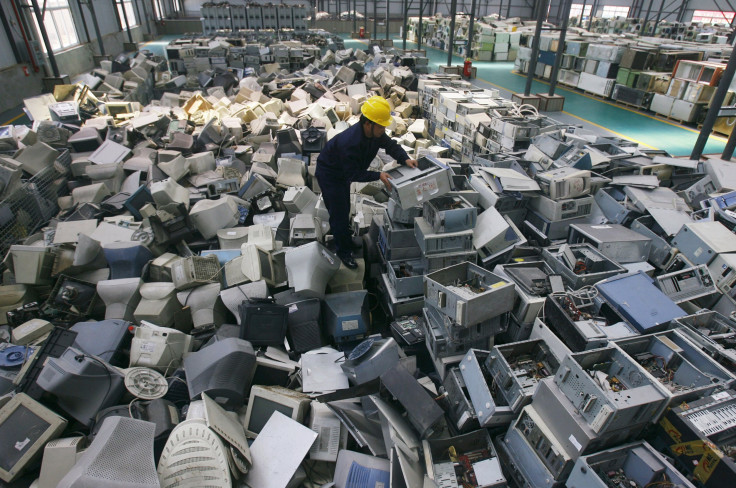Used Electronics Don't Die: New E-Waste World Map Reveals Worldwide Toll Of Discarded Electronics

Ever wonder where your old cell phone or laptop goes to die?
The volume of the world’s electronic waste, or any discarded product with a battery or electrical cord, is increasing but solutions to address this issue are nowhere in sight, according to a new interactive world map of e-waste created by Solving the E-Waste Problem Initiative, a partnership of UN organizations, industry, governments, nonprofits and science organizations.
The StEP Initiative has predicted that the annual volume of used and discarded electronics, such as refrigerators, TVs, mobile phones, computers, e-toys and other electronics people around the world have used and discarded, is expected to touch 65.4 million tons by 2017, which is a 33 percent jump in five years. The weight of all these e-waste will be equivalent to about 200 Empire State Buildings or 11 Great Pyramids of Giza.
“We believe that this constantly updated, map-linked database showing e-waste volume by country together with legal texts will help lead to better awareness and policy making at the public and private levels,” Ruediger Kuehr of United Nations University and executive secretary of the StEP Initiative said, in a statement.
The new e-waste world map presents comparable annual data from 184 countries. The map shows the estimated amount of electrical and electronic equipment put on the market, and how much actual e-waste is eventually generated from them.
People can click on a continent and a country and it will bring up an overview of the country's e-waste statistics, and details of local rules to help regulate the waste. And, according to the map, the U.S. had the largest amount of total e-waste in 2012, weighing in at 9.4 million tons, while China generated the second highest e-waste total of 7.3 million tons.
However, the countries were far apart when it came to the amount of annual e-waste per person. Americans produced an average of 65.6 pounds of e-waste each, which was almost six times higher than China's per capita figure of 11.9 pounds.
Overall, almost 48.9 million metric tons of used electrical and electronic products were produced last year -- an average of 15.4 pounds for each of the world's 7 billion people. And, according to the report, while most of these used e-products are destined for disposal, gradually improving efforts in some regions are diverting some of it to recycling and reuse.
“Although there is ample information about the negative environmental and health impacts of primitive e-waste recycling methods, the lack of comprehensive data has made it hard to grasp the full magnitude of the problem,” Kuehr said.
A report, associated with the e-waste world map and developed by the Massachusetts Institute of Technology’s Materials Systems Laboratory, looked at the collection and export of some types of used electronics in 2010. The report revealed that about 258.2 million used electronic items were generated during the year, two-thirds of which were reused or recycled and 8.5 percent of the remaining units were exported.
“The release of this study in the US is key to understanding one piece of the puzzle about exports of used electronics. The research also shows substantial increases in the US in collecting used electronics, and will set a baseline to measure future progress,” Jason Linnell, executive director of the National Center for Electronics Recycling, said in the statement.
© Copyright IBTimes 2024. All rights reserved.






















